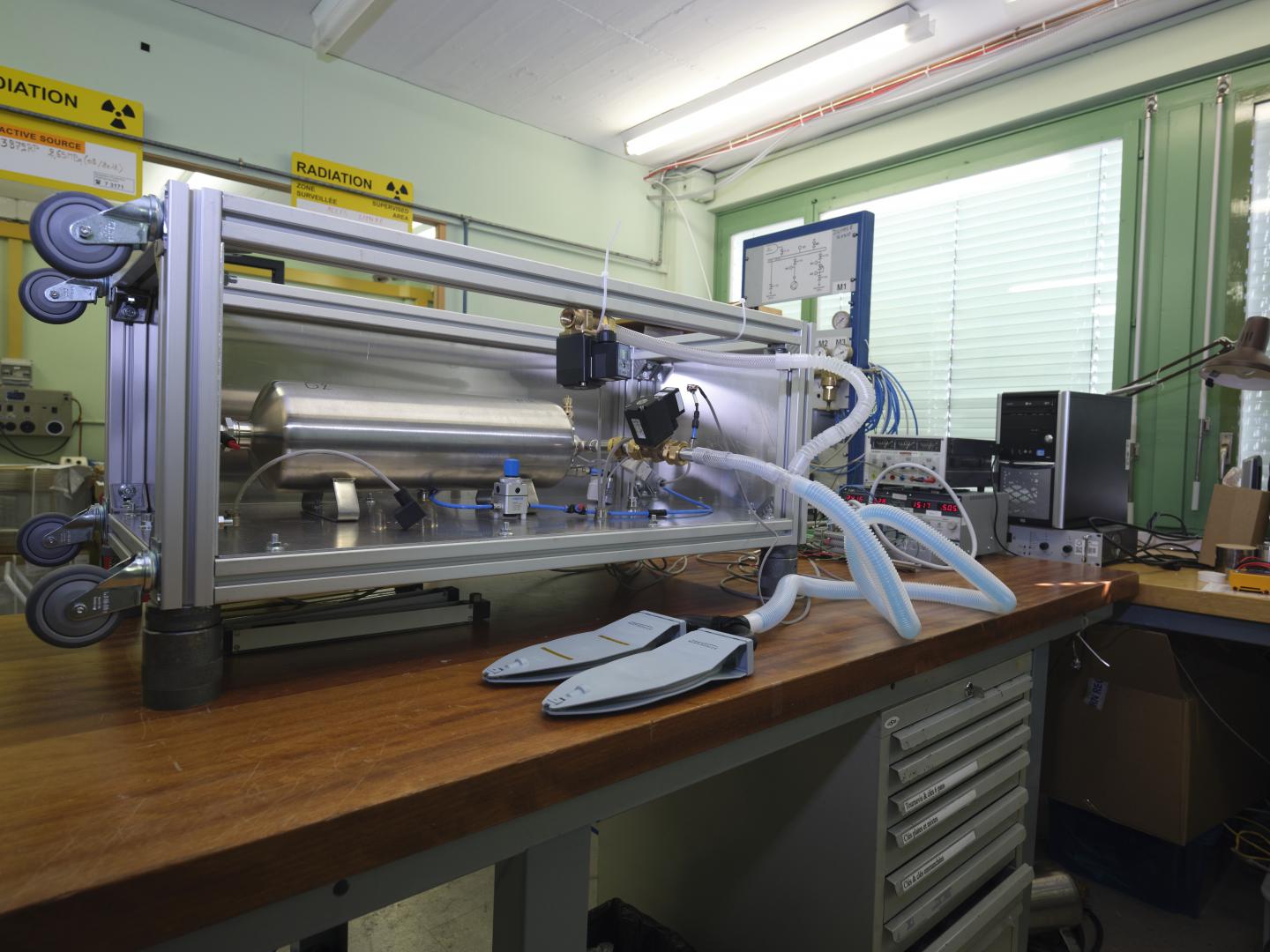The High Energy Ventilator (HEV) is based on components which are simple and cheap to source, complies with hospital standards, and supports the most requested ventilator-operation modes. Though the system needs to be verified by medical experts before it can enter use, in the interests of rapid development the HEV team has presented the design to generate feedback, corrections and support as the project progresses. The proposal is one of several recent and rapidly developing efforts launched by high-energy physicists to help combat COVID-19.
The HEV concept relies on easy-to-source components, which include electro-valves, a two-litre buffer container, a pressure regulator and several pressure sensors. Embedded components — currently Arduino and Rasbperry Pi — are being used to address portability requirements. The unit’s functionality will be comprehensive enough to provide long-term support to patients in the initial or recovery phases, or with more mild symptoms, freeing up high-end machines for the most serious intensive care.
The first stage of prototyping, which was achieved at CERN on 27 March, was to demonstrate that the HEV working principle is sound and allows the ventilator to operate within the required ranges of pressure and time. The desired physical characteristics of the pressure regulators, valves and pressure sensors are now being refined, and the support of clinicians and international organisations is being harnessed for further prototyping and deployment stages.
Update based on an article that first appeared in the CERN Courier.
Further reading:
- HEV Collaboration Website: hev.web.cern.ch
- Buytaert, J., et al. "The HEV Ventilator" arXiv preprint arXiv:2007.12012 (2020)
- Particle physicists propose stripped-down ventilator to help combat COVID-19

